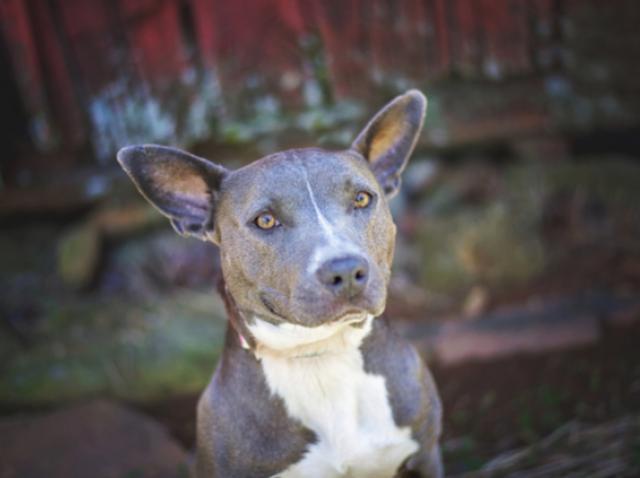Have you decided to save a life and bring a rescue dog home?
Congrats, you are giving a forgotten rescue dog a second chance at life. Once you bring a rescue dog home, they will reward you with years of unlimited love.
Once you decide to adopt, it is useful to know what to actually do from the minute you pick them up, through their first few months in your house. These 6 tips will guide those critical first few months, helping you bring a rescue dog home into a calm, loving environment while helping them with what can be a scary transition.
1. Know your Rescue Dog’s Background, But Don’t Let It Make You Soft
Many rescue dogs, unfortunately, come from rough backgrounds. Many are abandoned or abused. Some live tied to a chain with very little shelter or are left in a crate for hours on end.
Knowing where your rescue came from can help you help them acclimate to their new home.
But, don’t let traumas of the past make you too lenient with your new buddy. Dogs are incredibly resilient, and after a period of adaptation will push the limits of what they can get away with. Letting them know the boundaries, in a gentle, loving way, from day one will head off any behavior problems in the future.
If you bring a rescue dog home, especially a young dog, and decide that because they come from a bad background, you’ll let them do whatever they want in your house, expect trouble in the future. You have a tremendous opportunity to teach them that humans are compassionate, forgiving teachers, and they are now in a loving home with reasonable boundaries.
Get everyone in the family on board. Use the same words for training. Have everyone show the dog the same path to the door to go out, or however you’ll train them to let you know they need to use the bathroom. Have everyone follow the same feeding and exercise routines. Consistency is key, and this allows for a positive training approach.
2. Show Them Around Slowly
It’s tempting to bring your new dog home and let them run wild. There’s an undeniable cuteness to watching a dog that was depressed, confused and scared while living in a cage just an hour before now running around, exploring her new home with her nose.
But, most experts agree that keeping some rooms off limits at first will help your rescue become orientated in their new home while knowing that there are places they can’t go. This is a useful exercise in your yard as well. Blocking off flowerbeds, sections of the lawn, or parts of the fence that could lead to an easy escape can keep your dog safe.
3. Be Loving and Patient
Your rescue is undergoing a lot of change in a short time. They’re adapting to a new family, a new home, a new neighborhood. Even if your resume dog is house trained, they may not know the best routes to the door to let you know it’s time to go out.
Accidents will happen. As rescue dogs are often accustomed to being yelled at or physically punished following a bathroom accident.
Show them that cleanup is no big deal, there will be no yelling, and that the only physical touch they’ll receive in your home is of a loving nature. A confident dog is easily trainable. Use these as teachable moments.
4. Baby Proof the Area
This is important. Treat your new pup’s arrival the same way you would if a toddler was visiting. Hide exposed wires. Pick up small objects from the floor. Put cleaners and chemicals out of reach. Dogs, even seniors, explore with their noses and mouths. Remove all possibly harmful objects and you’ll avoid dangerous problems.
5. Establish Routine
Dogs thrive on routine. So, imagine how upsetting it is to go from their old way of life to living in a rescue with multiple dogs and other animals to being driven in a car to a strange home with new people. This ties in with number 1. Show them the ways of their new home and new life slowly, consistently, and patiently.
Guide them to the rooms they’re allowed in. Take them outside and let them explore your yard safely. If you are in an apartment, a few laps around the neighborhood will help your rescue get used to the area and feel more confident. Walking is also a great way for dogs to release mental energy and stress while bonding with their new family.
From day 1, start them on their feeding, exercise, play, and rest schedule. It’ll take a few days, maybe even a few weeks, but once the settle, they’ll be thrilled to know that 9-am is breakfast, 10am is walk time, and it’s all naps and play till dinner.
6. Be Flexible When You Bring a Rescue Dog Home
Know that your dog’s true personality may be in hiding. Dogs like to please, so for the first few weeks, expect them on their best behavior. Anyone who’d adopted a rescue will tell you – after 2 – 4 weeks, they’ll let their full personalities bloom.
They may be more or less energetic than at first, and they may eat more or less. They may show a rambunctious side.
Whatever the change, be ready for it. Since you established their routine early and set boundaries, these transitions are easy. You’ll have a confident, happy dog who’s thriving in their new forever home.
Most of my day is spent playing with dogs. When they nap, I’m here working on my blog. You’re welcome to reach out and connect with me.














